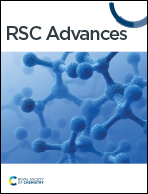Hybrid carbonaceous adsorbents based on clay and cellulose for cadmium recovery from aqueous solution
Abstract
The current work describes the synthesis of carbonaceous composites via pyrolysis, based on CMF, extracted from Alfa fibers, and Moroccan clay ghassoul (Gh), for potential use in heavy metal removal from wastewater. Following synthesis, the carbonaceous ghassoul (ca-Gh) material was characterized using X-ray fluorescence (XRF), Scanning Electron Microscopy coupled with Energy Dispersive X-ray (SEM-EDX), zeta-potential and Brunauer–Emmett–Teller (BET). The material was then used as an adsorbent for the removal of cadmium (Cd2+) from aqueous solutions. Studies were conducted into the effect of adsorbent dosage, kinetic time, initial concentration of Cd2+, temperature and also pH effect. Thermodynamic and kinetic tests demonstrated that the adsorption equilibrium was attained within 60 min allowing the determination of the adsorption capacity of the studied materials. The investigation of the adsorption kinetics also reveals that all the data could be fit by the pseudo-second-order model. The Langmuir isotherm model might fully describe the adsorption isotherms. The experimental maximum adsorption capacity was found to be 20.6 mg g−1 and 261.9 mg g−1 for Gh and ca-Gh, respectively. The thermodynamic parameters show that the adsorption of Cd2+ onto the investigated material is spontaneous and endothermic.



 Please wait while we load your content...
Please wait while we load your content...